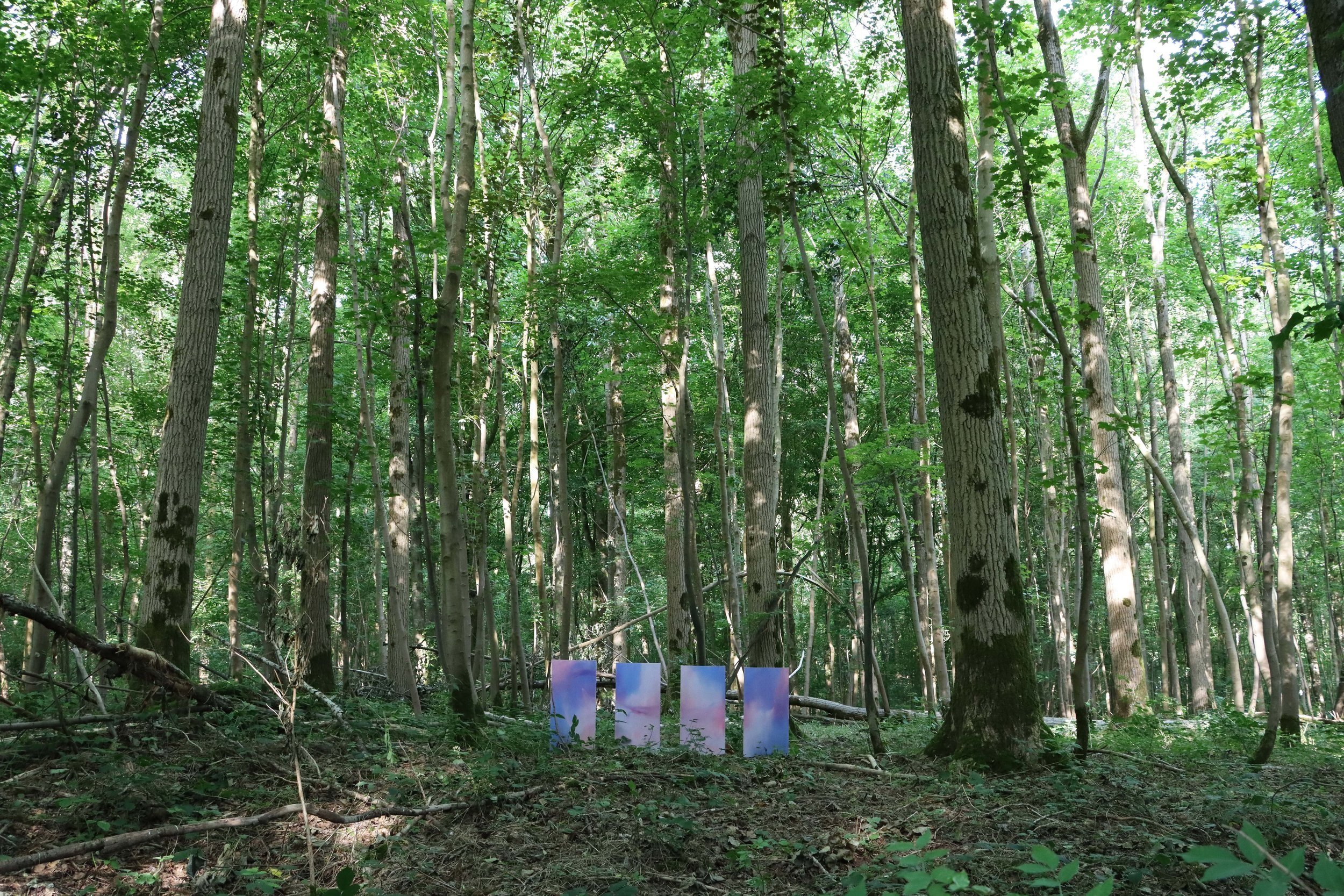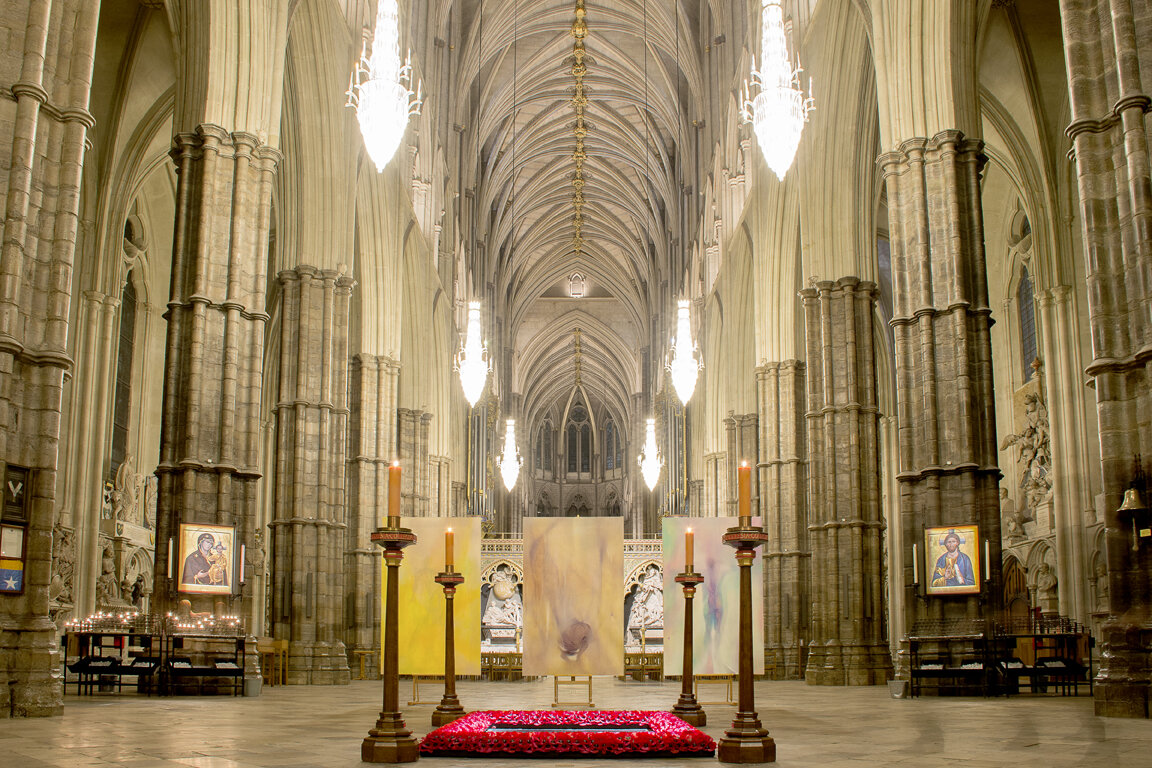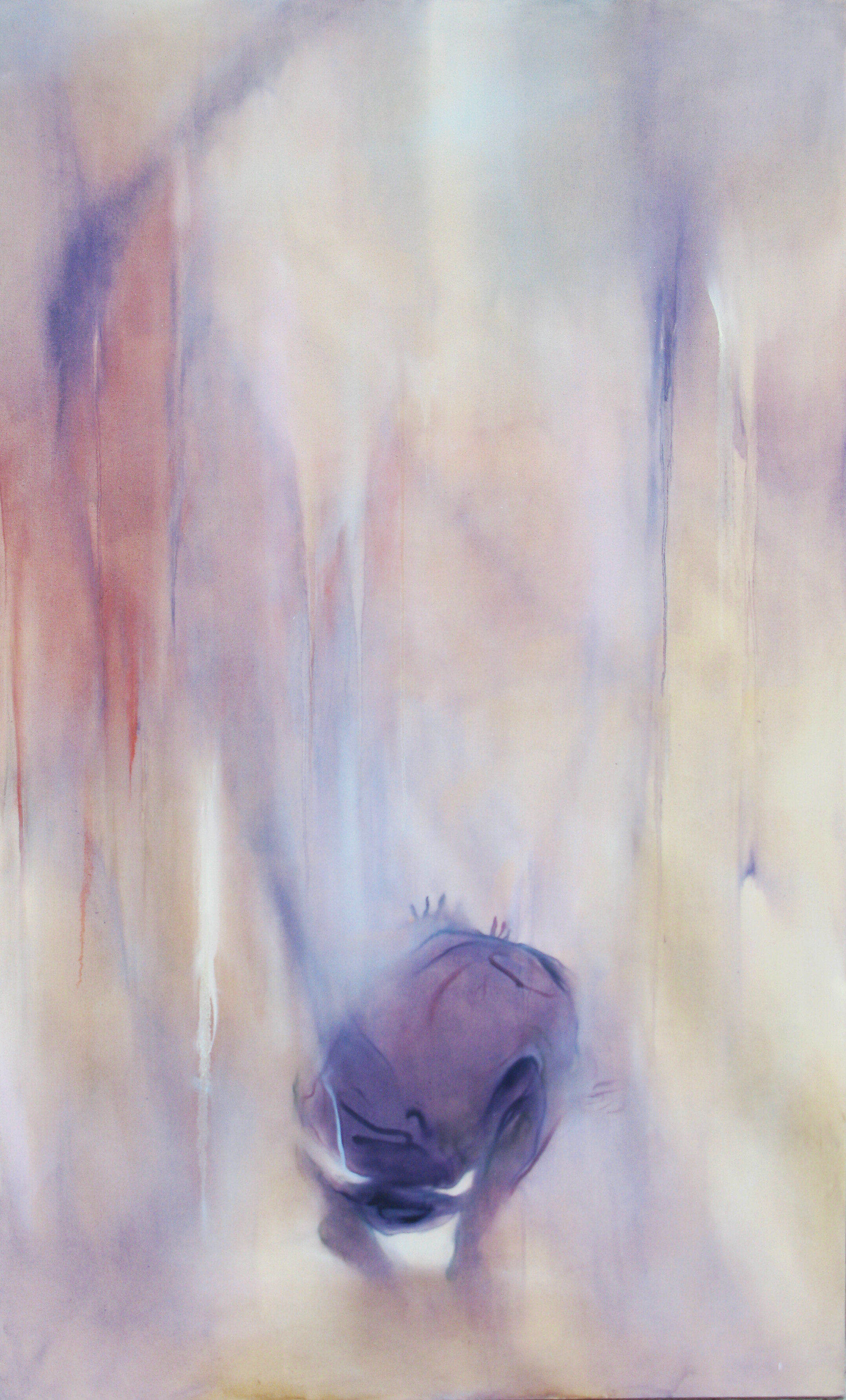
LANDS OF UNKNOWN WARRIORS
John Woodman
Lands of Unknown Warriors is an exhibition of new paintings by John Woodman in the Chapter House at Westminster Abbey. The Unknown Warrior was chosen for Westminster Abbey in 1920, from four unknown warriors who fought for Britain during the First World War, and who died in four different battle areas. In the summer of 2017 the artist spent time in the four locations (the Aisne, the Somme, Arras and Ypres), making studies of the landscapes as they are now. The oil paintings on show stem from these studies and use vivid colours which seek to distil the individual character experienced in each location. Each painting has been made across four separate canvases, one for each unknown warrior and each canvas is the same size as a Commonwealth War Grave (2 ft 6 in. in height and 1 ft 3 in. in width). Once completed, the canvases were taken to the battle areas in Belgium and France which inspired the paintings; photographs of this are also included in the exhibition.
‘...sacrifice of the individual is a great idea and worthy of commemoration; but the community of sacrifice, the service of a common cause, the comradeship of arms which has brought men together of all ranks and grades - these are greater ideas, which should be commemorated...’
WAR GRAVES, 1918, Report to the Imperial War Graves Commission by Lieut-Colonel Sir Frederick Kenyon, K.C.B., Director of the British Museum.
The exhibition was intended to mark the centenary of the Grave of the Unknown Warrior in November 2020, but was delayed due to COVID-19 lockdowns.
The Ypres canvases were gathered next to Caterpillar Crater at Hill 60.
One can see traces of fighting all around this site. Nowhere is it more apparent than in this enormous crater, the result of an Allied mine detonated in a tunnel underneath the German positions. At the bottom is a pool of water in which birds, insects and greenery now flourish. Despite the traces of the fighting, the whole area is very beautiful and feels oddly calm.
The Arras paintings stem mostly from the landscapes around Vimy Ridge. The remarkable monument on top of the ridge, designed by Walter Seymour Allward, can be seen on the horizon behind the paintings. Most of the studies made in Arras depicted trees, but despite repeated attempts to include them in this painting they had to be removed. The focus of the image, instead, is the ridge itself, drawn from this spot very hurriedly.
Initial work in this location was done when the field had just been ploughed and was devoid of crops - rather different from when the finished paintings returned to the site.
The Aisne paintings focus on a large area around the Chemin des Dames. The road itself is on a high plateau which affords the visitor wonderful views. The principal subject of this work was the Chapelle Sainte Berthe, a short distance away. The building has had a difficult history and the plaque above the door reads: Chapelle Sainte-Berthe of the 12th century burnt in 1814, rebuilt in 1871 destroyed in 1918, rebuilt in 1927.
The Somme battlefields contain a number of prominent sites, many of which influenced this painting. Perhaps the painting’s principal subject, though, is Trones Wood located near the Guillemont Road Cemetery. The final morning of painting on the Somme was extremely wet. The only shelter available came from the canopy of trees, which also framed the views of the landscape, and creates one of the dominant forms in the final painting.
The Grave of the Unknown Warrior
In 1916, the Reverend David Railton conceived of the Grave when he noticed a burial in a garden at Armentières marked by a rough cross carrying the words ‘An Unknown British Soldier’. In August 1920 he wrote about this conception to the Dean of Westminster, Herbert Ryle, who then created the memorial. In order to choose the Warrior, four unknown British servicemen were exhumed from four battle areas: the Aisne, the Somme, Arras and Ypres. The remains were placed in the chapel at St Pol-sur-Ternoise on the night of November 7th 1920, each one wrapped in a Union flag. That night Brigadier General L.J. Wyatt and Colonel E.A.S. Gell went into the chapel alone: they had no idea from which area the bodies had come. General Wyatt chose one of the four for Westminster, and the other three soldiers were then reburied at the Front.
Reunion with the Unknown Warrior
Reunion with the Unknown Warrior (2015) was intended to pay homage to all those who fought in the Great War and particularly to celebrate the bonds between these four soldiers who, even in death, were drawn together by a form of duty. Each painting is an imagined depiction showing one of the other three unknown soldiers, and the canvases are the same size as the Warrior’s actual tomb: 7 x 4 feet. The soldiers are caught in light and movement, amid sweeps of colour which have emerged by drawing the Union flag. On November 5th 2015, the paintings were positioned around the Grave of the Unknown Warrior in the Nave of the Abbey during Evensong (below), and spent the night with the memorial. A reunion of sorts.
The Series
Reunion 1, 2012
Reunion 2, 2013
Reunion 3, 2013
Ypres, 2019-20
Arras, 2019-20
The Aisne, 2019-20
The Somme, 2019-20







